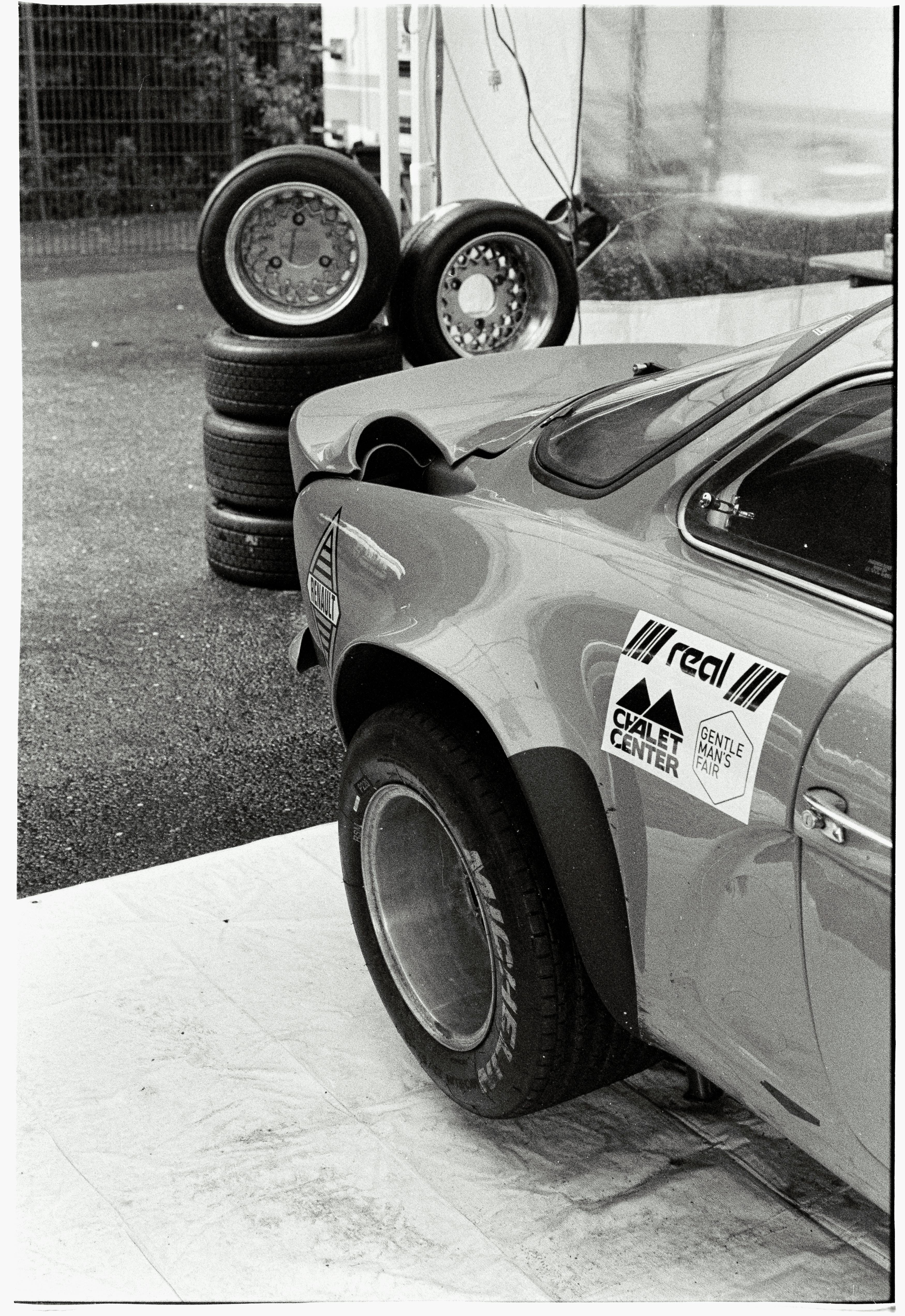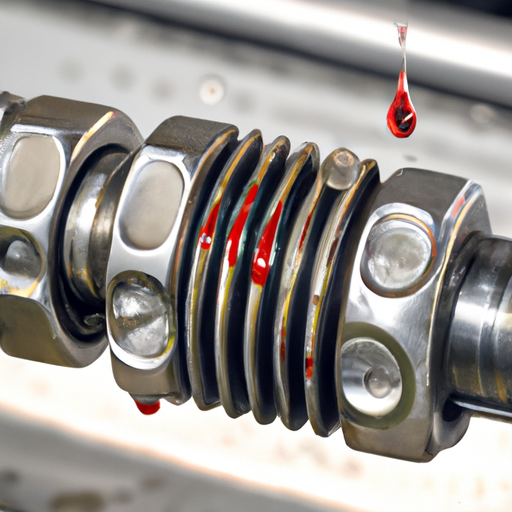Have you ever wondered why your car’s oil pressure drops when you come to a stop? It’s a common concern among car owners as they notice their dashboard warning light flickering or their oil pressure gauge showing a sudden decrease. Understanding the reasons behind this phenomenon can help you take better care of your vehicle and prevent potential damage. In this article, we will explore the various factors that contribute to a drop in oil pressure when you stop, including engine idling, oil viscosity, and possible underlying issues. So, let’s get started and unravel the mystery behind this common automotive question.


Understanding oil pressure
What is oil pressure?
Oil pressure refers to the force exerted by the oil within an engine’s lubrication system. It is vital for maintaining smooth and efficient engine operation. The oil pump in the engine creates this pressure, which ensures that the mechanical components receive adequate lubrication.
Importance of oil pressure
Oil pressure plays a crucial role in ensuring the longevity and optimal functioning of an engine. It acts as a protective barrier between moving engine parts, reducing friction and minimizing wear. Additionally, it helps to cool down engine components and flush away any contaminants or debris that may accumulate.
Factors that affect oil pressure
Several factors can influence the oil pressure levels in an engine. These include the viscosity and temperature of the oil, the functionality of the oil pressure sensor, the condition of the engine’s bearings, and potential restrictions in oil flow. It is essential to understand these factors to diagnose and address any potential issues that may arise.
Normal oil pressure levels
Recommended oil pressure range
The ideal oil pressure range for most engines typically falls between 25 to 65 pounds per square inch (psi). However, it is crucial to consult the manufacturer’s guidelines for a specific vehicle as the recommended pressure can vary.
Consequences of low oil pressure
Low oil pressure can have serious implications for the engine’s health. It can result in inadequate lubrication, leading to increased friction and wear on engine components. This can cause parts to seize or break, potentially resulting in costly repairs or even engine failure.
Negative effects of high oil pressure
While low oil pressure is a cause for concern, high oil pressure can also be problematic. Excessive pressure can place strain on engine seals, causing leaks. It can also result in increased resistance within the oil circulation system, leading to reduced engine performance and potential damage to engine components.
Causes of oil pressure drop when stopping
Idling engine and oil pressure drop
When you stop your vehicle and the engine is idling, the oil pump’s speed decreases, resulting in a drop in oil pressure. This is a natural occurrence and is not necessarily indicative of a problem with the engine.
Worn or faulty oil pump
A worn or faulty oil pump can also cause oil pressure to drop when the engine is at idle. A pump that is not functioning correctly may struggle to maintain adequate pressure, especially at lower engine speeds.
Issues with the oil pressure sensor
Faulty readings from the oil pressure sensor can give the impression that the pressure is dropping when it is not actually the case. Malfunctioning sensors may need to be replaced or re-calibrated to provide accurate readings.
Oil viscosity and temperature
Oil viscosity, or its thickness, can have an impact on oil pressure levels. If the oil is too thin, it may not create enough pressure, especially at idle. Additionally, extremely high temperatures can cause oil to thin out, potentially affecting oil pressure.
Oil leaks leading to pressure loss
Any oil leaks within the engine can significantly decrease oil pressure. As the oil seeps or sprays out, the system loses the necessary pressure to properly lubricate the engine components.
Problems with the engine’s bearings
The bearings within the engine play a vital role in providing smooth movement for its rotating parts. If the bearings are worn or damaged, they can create excess clearance and lead to a drop in oil pressure.
Restrictions in oil flow
Blockages or restrictions in the oil passages can impede the smooth flow of oil through the engine, resulting in decreased oil pressure. These restrictions can be caused by debris, sludge buildup, or damaged components.
Faulty pressure relief valve
The pressure relief valve regulates the oil pressure within the system. If this valve becomes stuck or fails to function correctly, it can cause irregular fluctuations in oil pressure, including drops when the engine stops.
Inconsistent oil levels
Insufficient or overfilled oil levels can also affect oil pressure. Inadequate oil levels may not provide enough pressure, while too much oil can result in excessive pressure.
Effects of oil pressure drop
Reduced lubrication
Lower oil pressure means less oil is reaching critical engine components. This can result in inadequate lubrication, leading to increased friction and wear on parts that require smooth movement.
Increased engine wear and tear
With reduced lubrication, engine components may suffer from excessive wear and tear. The lack of lubrication can cause parts to grind against each other, leading to damage and potentially necessitating costly repairs.
Overheating of engine components
Proper oil circulation helps dissipate heat generated by the engine. When oil pressure drops, the cooling capacity decreases, and engine components may experience overheating. This can further contribute to accelerated wear and potential engine damage.
Impacts on overall engine performance
Low oil pressure can negatively affect the overall performance of the engine. It can lead to decreased power output, reduced fuel efficiency, and potential engine stalling or hesitation.


Diagnostic steps and troubleshooting
Checking oil level and quality
Start by checking the oil level on the dipstick and ensure it falls within the recommended range. Additionally, inspect the oil for any signs of contamination or degradation, such as a milky appearance or a burnt smell.
Inspecting for oil leaks
Thoroughly examine the engine for any signs of oil leakage. Common areas to check include the oil pan, valve cover gasket, and oil filter housing. Repair any leaks promptly to prevent further oil pressure loss.
Testing oil pressure with a gauge
Using an oil pressure gauge, measure the actual oil pressure while the engine is running. Compare the readings to the manufacturer’s recommended values to determine if the pressure is within the acceptable range.
Examining oil pump and related components
Inspect the oil pump for any signs of wear or damage. Check the pump’s gears, driveshaft, and housing for proper functionality. Additionally, inspect the oil pickup tube for any blockages or obstructions.
Verifying oil pressure sensor functionality
If you suspect an issue with the oil pressure sensor, it can be tested using a diagnostic scanner or multimeter. Ensure the sensor is providing accurate readings and replace it if necessary.
Assessing the engine’s bearings
A thorough examination of the engine’s bearings is essential. Look for signs of wear, damage, or excessive clearance. If any bearings are found to be faulty, they may need to be replaced.
Exploring potential restrictions in oil flow
Inspect all oil passages and channels for any blockages or restrictions. Clean out any debris or sludge and ensure that the oil can flow smoothly through the engine.
Evaluating pressure relief valve
Check the pressure relief valve for proper functioning. A faulty valve may need to be cleaned or replaced to regulate oil pressure effectively.
Monitoring oil pressure during idling
While the engine is idling, carefully observe the oil pressure gauge. If the pressure drops significantly below the recommended range or fluctuates excessively, further investigation is necessary.
Preventive maintenance and solutions
Regular oil changes and filter replacement
Adhering to the manufacturer’s recommended oil change intervals and replacing the oil filter regularly can help maintain proper oil pressure levels. Fresh oil and a clean filter ensure optimal lubrication and prevent debris buildup.
Using the correct oil viscosity
Using the appropriate oil viscosity for your vehicle is crucial. Consult the owner’s manual or manufacturer’s recommendations to select the correct viscosity for your engine’s needs and ambient temperature conditions.
Monitoring and addressing oil leaks promptly
Regularly inspect the engine for any signs of oil leaks and address them promptly. Fixing leaks prevents pressure loss and ensures the engine maintains the necessary lubrication.
Maintaining consistent oil levels
Check your vehicle’s oil level regularly and ensure it remains within the recommended range. Avoid overfilling or allowing the oil level to drop too low, as both can affect oil pressure.
Addressing engine bearing issues
If engine bearings are found to be worn or damaged, they should be replaced promptly. Ensure the correct bearings are used and professionally install them to maintain proper oil pressure and protect the engine.
Cleaning or replacing clogged oil passages
If oil passages are restricted by debris or sludge buildup, they should be carefully cleaned or flushed to restore proper oil flow. Depending on the severity of the blockage, professional assistance may be required.
Repairing or replacing faulty oil pump
If the oil pump is determined to be faulty or worn, it should be repaired or replaced. A properly functioning pump is vital to maintain consistent oil pressure levels.
Calibrating or replacing faulty pressure relief valve
If the pressure relief valve is not functioning correctly, it may need to be recalibrated or replaced. This ensures the valve regulates oil pressure effectively throughout the engine.


Seeking professional help
When to consult a mechanic
If you are unsure about diagnosing or addressing oil pressure issues, or if the problem persists after troubleshooting, it is advisable to consult a professional mechanic. They have the knowledge and expertise to accurately diagnose and repair any underlying problems.
Importance of professional diagnosis
A professional diagnosis is crucial for accurately identifying the root cause of oil pressure problems. They have access to specialized tools and equipment and can provide the necessary expertise to ensure an effective solution.
Choosing a reliable automotive technician
When seeking professional help, it is essential to choose a reliable and experienced automotive technician. Look for certifications, customer reviews, and recommendations to ensure you entrust your vehicle to a skilled professional.
Conclusion
Understanding oil pressure is key to maintaining a healthy and reliable engine. By recognizing the factors that affect oil pressure, the potential causes of pressure drops, and the associated effects, you are better equipped to diagnose, troubleshoot, and address any issues that may arise. Regular preventive maintenance, timely repairs, and professional assistance when needed will help ensure your engine maintains optimal oil pressure levels for years to come.


